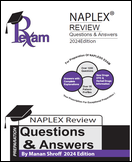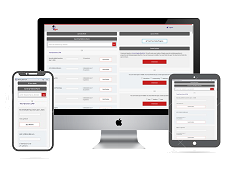
Which of the following is/are false positive tuberculin skin test reactions? [Select All that apply]
a. Infection with non-tuberculosis mycobacteria
b. Cutaneous anergy
c. Previous BCG vaccination
d. Very old TB infection
e. Recent live-virus vaccination
Which of the following is/are false positive tuberculin skin test reactions? [Select All that apply]
a. Infection with non-tuberculosis mycobacteria
b. Cutaneous anergy
c. Previous BCG vaccination
d. Very old TB infection
e. Recent live-virus vaccination
Answer: (a,c). The Mantoux tuberculin skin test (TST) is the standard method of determining whether a person is infected with Mycobacterium tuberculosis. Reliable administration and reading of the TST requires standardization of procedures, training, supervision, and practice.
The TST is performed by injecting 0.1 ml of tuberculin purified protein derivative (PPD) into the inner surface of the forearm. The injection should be made with a tuberculin syringe, with the needle bevel facing upward. The TST is an intradermal injection. When placed correctly, the injection should produce a pale elevation of the skin (a wheal) 6 to 10 mm in diameter.
The skin test reaction should be read between 48 and 72 hours after administration. A patient who does not return within 72 hours will need to be rescheduled for another skin test.
The reaction should be measured in millimeters of the induration (palpable, raised, hardened area or swelling). The reader should not measure erythema (redness). The diameter of the indurated area should be measured across the forearm (perpendicular to the long axis).
Skin test interpretation depends on two factors:
1. Measurement in millimeters of the induration
2. Person's risk of being infected with TB and of progression to disease if infected
What Are False-Positive Reactions?
Some persons may react to the TST even though they are not infected with M. tuberculosis. The causes of these false-positive reactions may include, but are not limited to, the following:
1. Infection with non-tuberculosis mycobacteria
2. Previous BCG vaccination
3. Incorrect method of TST administration
4. Incorrect interpretation of reaction
5. Incorrect bottle of antigen used
What Are False-Negative Reactions?
Some persons may not react to the TST even though they are infected with M. tuberculosis. The reasons for these false-negative reactions may include, but are not limited to, the following:
1. Cutaneous anergy (anergy is the inability to react to skin tests because of a weakened immune system)
2. Recent TB infection (within 8-10 weeks of exposure)
3. Very old TB infection (many years)
4. Very young age (less than 6 months old)
5. Recent live-virus vaccination (e.g., measles and smallpox)
6. Overwhelming TB disease
7. Some viral illnesses (e.g., measles and chicken pox)
8. Incorrect method of TST administration
9. Incorrect interpretation of reaction
Try our Naplex QBank. www.pharmacyexam.com **Please note: This type of question will not show up in an MPJE. We are just posting to MPJE group for knowledge.



